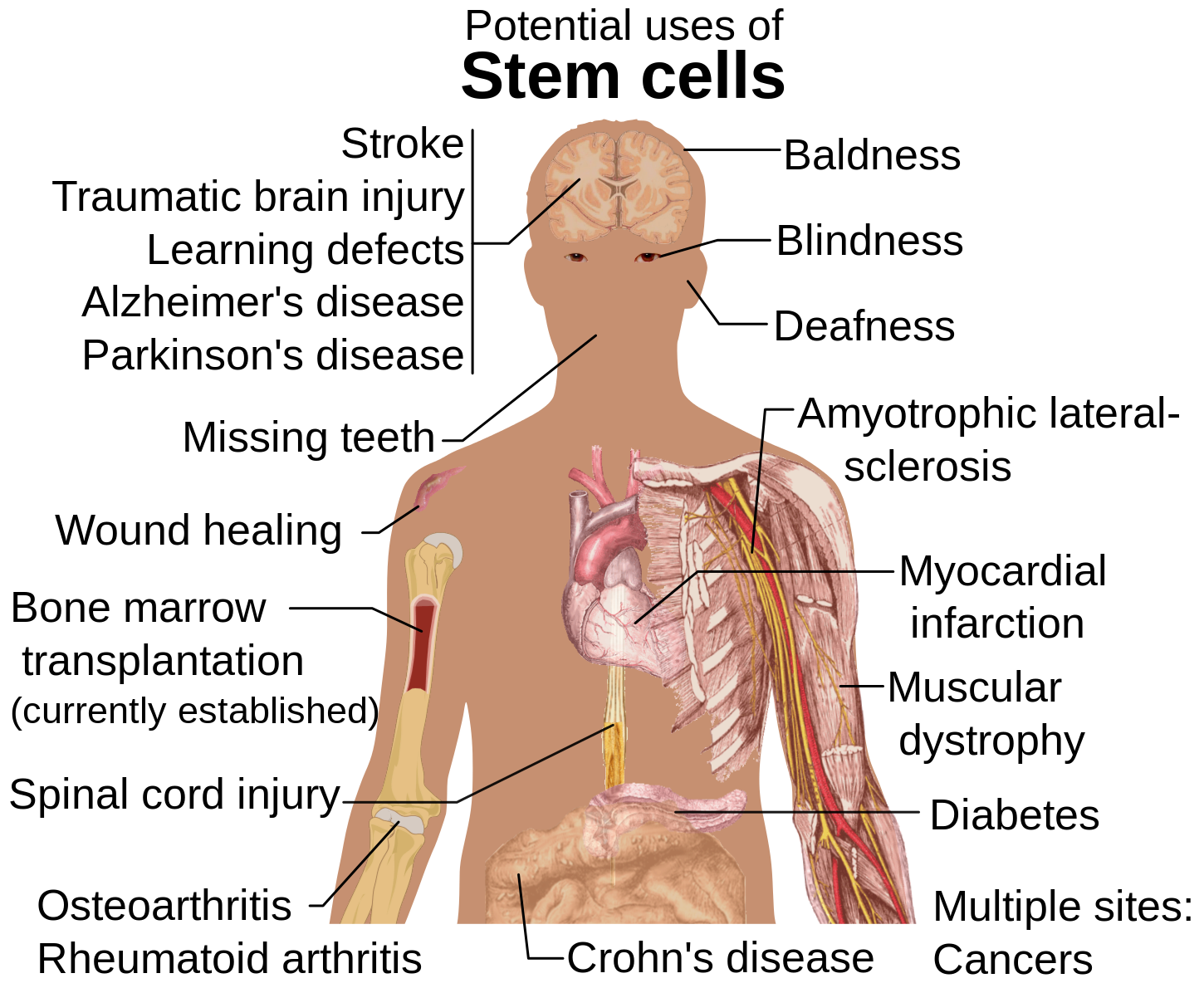Stem cells are important for living organisms for many reasons. In the 3- to 5-day-old embryo, called a blastocyst, the inner cells give rise to the entire body of the organism, including all of the many specialized cell types and organs such as the heart, lung, skin, sperm, eggs and other tissues. In some adult tissues, such as bone marrow, muscle, and brain, discrete populations of adult stem cells generate replacements for cells that are lost through normal wear and tear, injury, or disease.
Given their unique regenerative abilities, stem cells offer new potentials for treating diseases such as diabetes, and heart disease. However, much work remains to be done in the laboratory and the clinic to understand how to use these cells for cell-based therapies to treat disease, which is also referred to as regenerative or reparative medicine.
Laboratory studies of stem cells enable scientists to learn about the cells’ essential properties and what makes them different from specialized cell types. Scientists are already using stem cells in the laboratory to screen new drugs and to develop model systems to study normal growth and identify the causes of birth defects.
Research on stem cells continues to advance knowledge about how an organism develops from a single cell and how healthy cells replace damaged cells in adult organisms. Stem cell research is one of the most fascinating areas of contemporary biology, but, as with many expanding fields of scientific inquiry, research on stem cells raises scientific questions as rapidly as it generates new discoveries.

Can doctors use stem cells to treat patients?
Some stem cells, such as the adult bone marrow or peripheral blood stem cells, have been used in clinical therapies for over 40 years. Other therapies utilizing stem cells include skin replacement from adult stem cells harvested from hair follicles that have been grown in culture to produce skin grafts. Other clinical trials for neuronal damage/disease have also been conducted using neural stem cells. There were side effects accompanying these studies and further investigation is warranted. Although there is much research to be conducted in the future, these studies give us hope for the future of therapeutics with stem cell research.
Potential Therapies using Stem Cells
Adult Stem Cell Therapies
Bone marrow and peripheral blood stem cell transplants have been utilized for over 40 years as therapy for blood disorders such as leukemia and lymphoma, amongst many others. Scientists have also shown that stem cells reside in most tissues of the body and research continues to learn how to identify, extract, and proliferate these cells for further use in therapy. Scientists hope to yield therapies for diseases such as type I diabetes and repair of heart muscle following heart attack.
Scientists have also shown that there is potential in reprogramming ASCs to cause them to transdifferentiate (turn back into a different cell type than the resident tissue it was replenishing).
Embryonic Stem Cell (ESC) Therapies
There is potential with ESCs to treat certain diseases in the future. Scientists continue to learn how ESCs differentiate and once this method is better understood, the hope is to apply the knowledge to get ESCs to differentiate into the cell of choice that is needed for patient therapy. Diseases that are being targeted with ESC therapy include diabetes, spinal cord injury, muscular dystrophy, heart disease, and vision/hearing loss.
Induced Pluripotent Stem Cell Therapies
Therapies using iPSCs are exciting because somatic cells of the recipient can be reprogrammed to en “ESC like” state. Then mechanisms to differentiate these cells may be applied to generate the cells in need. This is appealing to clinicians because this avoids the issue of histocompatibility and lifelong immunosuppression, which is needed if transplants use donor stem cells.
iPS cells mimic most ESC properties in that they are pluripotent cells, but do not currently carry the ethical baggage of ESC research and use because iPS cells have not been able to be manipulated to grow the outer layer of an embryonic cell required for the development of the cell into a human being.

